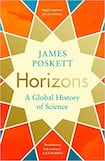
Where did science come from? The story goes that it emerged in Europe, from the minds of a few lone geniuses working in glorious isolation. There was Nicolaus Copernicus. Then Galileo, Newton, Darwin and Einstein, who heralded in the modern age. Yet, this story is a myth, the author argues. Scientific progress has only been possible, he says, citing examples, through global sharing of ideas and the interconnectedness of people, cultures and nations.
This holds true across all scientific disciplines. Take astronomy: many of us will know from school or college that the heliocentric theory of the universe – which put the sun at the centre of it all – was proposed in 1543 by Copernicus, a Polish monk. Yet how many know Copernicus was simply building on ideas that had been floating around the Islamic scientific world for centuries?
Between 1025 and 1028 – five centuries before Copernicus – the Islamic astronomer Ibn al-Haytham, born in Basra in what is now Iraq, wrote Al-Shukuk ala Batlamyus (Doubts on Ptolemy). In it, al-Haytham said Ptolemy’s idea of the planets moving around an immovable Earth didn’t match his observations and challenged astronomers to find a theory that worked.
Europe, rather than leading the way in science, often lagged far behind. Beginning in the ninth century, Islamic scholars translated Ptolemy’s texts and those of other ancient greats into Arabic, and scientists set out testing their veracity using scientific methods.
Carl Anderson got a Nobel Prize – apparently for simply confirming what Zhao had already discovered
What began in the Islamic world spread along the silk road, and triggered, centuries later, a Renaissance in the Christian West.
Yet, it wasn’t just Islamic ideas travelling the famous road linking Shanghai with Timbuktu. Along this route, ideas from Chinese, Japanese, Russian, African and Indian culture were in the mix.
Great injustice
There is injustice at the heart of this book, with the author citing multiple cases where discoveries by non-European scientists were credited to Europeans. Take the discovery of the structure of the atom by Ernest Rutherford in 1911. This won Rutherford great acclaim, and became a pillar of modern atomic physics.
The author reveals, however, that Rutherford borrowed heavily, to put it mildly, in formulating his “atomic theory” from the Japanese physicist Hantaro Nagaoka, who proposed in 1903 that the atom was made up of a positively charged particle at its core, orbited by a negatively charged particle – Rutherford’s theory in a nutshell.
Then there’s the case of Chinese scientist Zhao Zhongyao, who discovered antimatter in 1930 when he was the first to detect a positron, the antimatter equivalent to an electron. In 1932, Carl Anderson, an American physicist, announced that he too had found a positron. Result? Anderson got a Nobel Prize – apparently for simply confirming what Zhao had already discovered.
India tested its first nuclear bomb in 1974, which came as a surprise in the West
Europeans, the author says, assumed that indigenous peoples in particular were incapable of great science. Yet Spanish explorers, keen to exploit local crops as products and medicines, relied heavily on the detailed botanical knowledge of the Aztecs.
Captain James Cook also relied on native Polynesians to help him navigate uncharted Pacific waters using the position of the sun and gauging the rise and fall of ocean swell. This knowledge was critical in helping Cook discover Australia and Tasmania.
Political point
The author’s other main argument is that science is often serving a political purpose at a particular time in a particular place. For example, a top priority for Chinese geneticists in the 1960s was to develop new rice crop varieties that could feed more people and help avoid a repeat of the 1959-61 famine, in which 15 million people died.
In 1950s and 1960s India, the priority for physicists was to develop a nuclear capability, which would protect it against neighbouring Pakistan and give it credibility as a global power. India tested its first nuclear bomb in 1974, which came as a surprise in the West.
European scientists for centuries served the political goals of empire building, which was based on slave trading, military power, oppression and violence. It was normal for scientists like Isaac Newton to invest in the overseas slave trade and benefit from data gathered throughout the empire and sent back to London.
The author hopes for a future where the historic truth about how scientific progress has been made is universally accepted, where all cultures are valued, and where global scientific collaboration unleashes the creativity to solve problems such as climate change.












